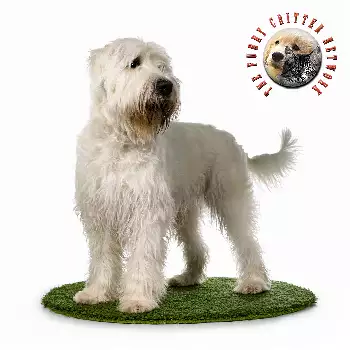The Bouvier des Ardennes emerged from the rugged, mountainous Ardennes region spanning eastern Belgium, northern Luxembourg, and southern reaches of the Netherlands. This challenging landscape, characterized by dense forests, steep hillsides, and harsh weather conditions, shaped the development of a hardy, versatile working dog capable of thriving where more refined breeds would struggle. The breed's exact origins remain obscured by time and the rural, practical nature of its development, as early Belgian farmers and cattle herders focused on functional ability rather than pedigree documentation.
Historical evidence suggests that dogs resembling the modern Bouvier des Ardennes existed in the Ardennes region for several centuries before formal breed recognition. Medieval records occasionally reference rough-coated herding dogs employed by cattle drovers moving livestock through the mountainous terrain between Belgium, Luxembourg, and France. These early dogs likely descended from a mixture of indigenous herding dogs, possibly crossed with larger mastiff-type breeds to enhance protective abilities and physical strength. The harsh selection pressure of the environment eliminated dogs lacking the toughness, intelligence, and adaptability necessary for survival and work in such demanding conditions.
By the eighteenth and nineteenth centuries, the Bouvier des Ardennes had evolved into a recognizable type, though individual dogs varied significantly in appearance based on the specific needs of their owners. Some farmers preferred smaller, more agile dogs for working sheep on steep hillsides, while cattle drovers favored larger, more powerful dogs capable of controlling stubborn bulls. Coat texture and color held little importance compared to working ability, weather resistance, and sound temperament. This pragmatic breeding approach created a gene pool rich in functional traits but variable in cosmetic appearance.
The late nineteenth century brought significant changes to European agriculture that would profoundly impact the Bouvier des Ardennes. Industrialization reduced the need for traditional herding dogs as railways and improved roads enabled livestock transport by mechanical means. Simultaneously, the growing popularity of purebred dogs and formal breed standards encouraged fanciers to codify and preserve distinct Belgian dog breeds. Several individuals recognized the unique qualities of the rough-coated Ardennes herding dogs and began efforts to establish them as a formal breed.
Early twentieth-century breed standardization proved challenging due to the significant variation within the Ardennes herding dog population. Debates arose regarding acceptable size ranges, coat colors, and specific physical characteristics that should define breed type. Some enthusiasts advocated for a larger, more powerful dog, while others preferred a medium-sized, agile animal. These disagreements slowed formal recognition and contributed to confusion that persists in historical records. Eventually, a compromise standard emerged that acknowledged the breed's working heritage while establishing parameters to distinguish the Bouvier des Ardennes from other Belgian herding breeds.
World War I devastated Belgian dog breeds, and the Bouvier des Ardennes suffered particularly heavy losses. The Ardennes region experienced intense combat, displacing civilian populations and destroying agricultural infrastructure. Many breeding dogs perished during the conflict, and surviving examples scattered across refugee populations. Post-war reconstruction efforts focused on human needs and more economically valuable livestock, leaving little resources for preserving rare dog breeds. By the 1920s, the Bouvier des Ardennes teetered on the brink of extinction, with only scattered individuals remaining in remote farming communities.
A small group of dedicated Belgian enthusiasts initiated revival efforts during the interwar period, seeking out remaining examples and establishing breeding programs to preserve the distinctive Ardennes type. These pioneers faced enormous challenges, including limited breeding stock, economic depression, and competition from more popular Belgian breeds like the Bouvier des Flandres and Belgian Shepherd variants. Progress occurred slowly, with setbacks arising from disease outbreaks, economic hardship, and the lingering effects of wartime population losses.
World War II delivered another crushing blow to the breed's recovery efforts. The Ardennes region again became a combat zone, particularly during the Battle of the Bulge in 1944-1945. Many breeding programs collapsed entirely, and documentation of surviving bloodlines disappeared in the chaos. Post-war recovery proved even more difficult than after World War I, as modernization accelerated and traditional farming practices declined rapidly across Europe. The need for working herding dogs diminished further, removing the economic incentive that had sustained the breed for centuries.
In the late twentieth century, the Bouvier des Ardennes survived primarily through the dedication of a handful of enthusiasts who valued the breed's heritage and unique qualities. Population numbers remained critically low, with annual registrations often numbering in the single digits. Genetic diversity became a growing concern as the limited breeding pool increased the risk of inherited health problems and reduced the breed's ability to adapt to changing conditions. Despite these challenges, passionate advocates continued their preservation work, occasionally introducing carefully selected outcrosses to expand genetic diversity while maintaining breed type.
The twenty-first century finds the Bouvier des Ardennes still among Europe's rarest dog breeds, with a precarious future dependent on continued dedication from a small community of breeders and owners. Modern preservation efforts benefit from advances in genetic testing, international cooperation through the internet, and growing interest in rare and heritage breeds. Some countries have implemented programs to protect endangered native dog breeds, providing modest support for Bouvier des Ardennes conservation. However, the breed remains far from secure, requiring ongoing commitment to prevent its disappearance from the world's canine heritage.

